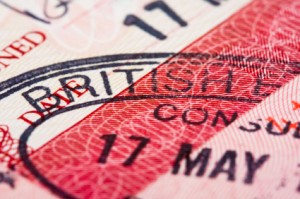Holiday destination and country of emigration
I have recently returned from my summer holiday to Albania. Although Albania might not come to mind as a common tourist destination, it has a great deal to offer and the numbers of tourists are increasing. From the so-called Alps of the Balkans in the North, to stunning, often small secluded beaches with crystal-clear water, to three significant UNESCO World Heritage sights, not to mention the countless churches, monasteries, and mosques.
Furthermore, it has the feeling of a hidden place that was completely closed off from the outside world until the early 1990s and of an excursion into a communist past, maintained by Enver Hoxha’s party for over half a century. The remnants of this rule are still clearly visible: the many indestructible bunkers are dotted around the country, the massive reservoirs have become clear landmarks and extensive irrigation systems are still bringing water from the mountains to the farmers in the valley. These are mixed with testaments to Albania’s different pasts, where Hoxha’s submarine bay is next to Ali Pasha’s castle Porto Palermo, and where the ruins of Burtrint illustrate the history of the Balkan area, from pre-Roman rule until the end of the Ottoman Empire.
 For us in the West seeing all this comes at very affordable prices, unlike for most the local population who have to survive on an average salary of around €150-200 per month. It is then not surprising that in fact most Albanians themselves have seen little, or rarely even know about, many of these sights, and would in fact rather emigrate. Albania then is a place where two forms of today’s mobility collide and connect.
For us in the West seeing all this comes at very affordable prices, unlike for most the local population who have to survive on an average salary of around €150-200 per month. It is then not surprising that in fact most Albanians themselves have seen little, or rarely even know about, many of these sights, and would in fact rather emigrate. Albania then is a place where two forms of today’s mobility collide and connect.
Two kinds of mobility
One kind of mobility is the tourism, travel and work of the more privileged of our global world. On holiday I met tourists from Australia, the US and Western European Countries. In addition there are those working for the many international organisations, especially across the border in Kosovo.
On the other hand there are a great number of Albanians who are seeking a better life in another country – not surprising in a country where a full-time postman in the capital Tirana earns €150 a month to support a family of four.
These two kinds of mobility meet in a country like Albania, and as such often starkly illustrate the disparities between the countries of citizenship of the two types of “migrants”.
The differences start with the border control. Visitors to Albania with a British passport can simply turn up at the border and will be let in without even having to pay. However, visiting the UK on an Albanian passport is not nearly so easy or cheap – during our trip we met two of many who have recently had their visitor visa to the UK refused, one a student with a scholarship to Oxford, the other married to a British citizen.
The reasons for these kinds of mobility further illustrate the global economic inequalities. Those going to Albania usually come to enhance their career or, as tourists go for leisure. They are welcomed by Albanians with open arms based on their strongly developed tradition of hospitality. Albania’s emigrants on the other hand are not just seeking a better life elsewhere. The extent of its unemployment means that the income from their remittances is essential to the survival of many families. There was not one person I met on holiday who either had not been abroad themselves or who have family abroad now. Most Albanians have then strong transnational links to many countries across Europe – clearly visible with the many different national number plates on cars driving around Albania.
At times emigrants and tourists cross paths directly, for example when return migrants open restaurants, hotels, give guided tours and offer other touristic activities. An evening meal is then often accompanied with a story of time spent in the UK or Germany. This is one of the few areas that have been explored academically. Described as the migration-tourism-nexus, studies tell of the business that tourists bring and a new tourism industry that is developing to serve the visitors.
So, why is this interesting to migration studies?
What then makes the citizens of the UK and Albania have such different stories of mobility? And what makes the two together in one situation so interesting to migration scholars? Anecdotally, one of the key differences is the wealth of the respective citizens and their countries – those from countries with money have greater mobility throughout the world than those with less. What makes this situation interesting to study from a migration perspective for me, is that by so visually and powerfully illustrating the different kind of mobilities that exist in today’s world, we start questioning some of the underlying assumptions of who moves and why. More importantly, this contrast asks us in Western or developed countries what kinds of mobility are deemed as acceptable.
 Why is it that simply having a British passport means freedom of movement to the majority of countries in the world, however having an Albanian passport means that your movement is restricted to almost exclusively its neighbouring countries? Why do we think that we have a right to visit almost any country in the world, simply because of the country we were born in, but restrict visits into this country that gives us this privilege to citizens of the countries that we like to visit? What are the processes that lead to such outcomes in the value of one passport over another?
Why is it that simply having a British passport means freedom of movement to the majority of countries in the world, however having an Albanian passport means that your movement is restricted to almost exclusively its neighbouring countries? Why do we think that we have a right to visit almost any country in the world, simply because of the country we were born in, but restrict visits into this country that gives us this privilege to citizens of the countries that we like to visit? What are the processes that lead to such outcomes in the value of one passport over another?
Recently though, visa restrictions for Albanian citizens have been lifted for the Schengen area. Although this is already being doubted by the German Interior Ministry with regards to Serbia and Macedonia, this might indicate an initial shift in the value of different passports throughout the world.